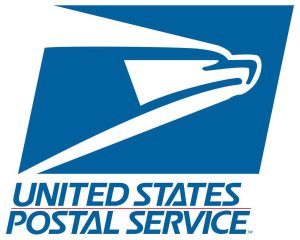Like most organizations, America’s Second Harvest in Chicago is always considering ways in which technology can help. The nonprofit relies heavily on the donations of food and grocery products. Their challenge is moving food from the donors, through their organization, to local affiliates.
Most of this process was done through faxes, telephone calls, and emails. While the system worked, the organization’s technology staff was looking for a more uniform method of exchanging information with donors and local sites. They had been considering using the same software packages as their donors or using Electronic Data Interchange (EDI), a technology used for moving data between business partners that have different systems.
The organization has multiple technology projects working. It has raised $13 million for a software initiative, including a startup grant of $5 million from ConAgra in Omaha, Neb., $7 million from the Donald W. Reynolds Foundation in Las Vegas and $1 million from the Starr Foundation in New York City, plus a $400,000 technology opportunity program grant from the U.S. Department of Commerce.
It also has received more than $2 million in support and sweat from Hewlett-Packard (HP).
“In the national office, we’re still using phone and fax,” said David Prendergast, vice president for technology.
The system, which America’s Second Harvest (ASH) is buying from Navision U.S. in Duluth, Ga., and dubbed “Ceres” for the Roman goddess of agriculture, replaces the Adage system that roughly a dozen local food banks used under licensing agreements with Second Harvest and SCT Corp. in Malvern, Pa., which makes Adage.
ASH has purchased 100 licenses for the new system, which integrates inventory and financial functions to track and report on food donations and deliveries to agencies.
The system, piloted at the Second Harvest Roadrunner Food Bank in Albequerque, N.M., will be free to local food banks that sign up with regional Navision resellers.
Prendergast expects up to three-fourths of ASH’s member food banks will use the system by the end of 2003, including 55 that already have signed up and another 45 that have indicated they want it.
Features to be added this fall will let agencies shop online at local food banks, and will let food banks manage inventory by using bar codes.
America’s Second Harvest will use a customized version of Navision’s software for its own internal operations, helping it communicate with donors and integrate its software with ResourceLink, the HP system that matches charities with donors in the fields of food, building supplies and clothing.
Roughly a dozen food firms, including Kraft Foods in Northfield, Ill., and Minneapolis-based Pillsbury, use a system called ResourceLink to donate food to ASH food banks.
HP approached America’s Second Harvest with a proposal that went well beyond the organization’s plan for technological development. HP planned to create ResourceLink. The vision was to partner with charities that serve each of the most fundamental human needs: food, shelter, and clothing.
“We’re trying to develop processes to make it more simple for the donors as well as the charities to handle transactions as far as donations are concerned,” said Jason Brooks, technical project manager ResourceLink at HP.
In June, 1999 HP proposed a Web-based exchange where food donors could post excess supply that would be automatically matched with the affiliates that need it. America’s Second Harvest had never considered such a process.
“I had an ‘e-piphany.’ We really hadn’t seen this particular path. Then here is somebody putting this in front of us saying ‘We can do this with you if you are interested.’ There was almost no hesitation on our part to jump in with both feet,” said Prendergast. He estimated the cost of creating such a program would have been at least $2 million.
America’s Second Harvest’s first step was to communicate with donors to understand how the site could be designed to meet their needs. They enlisted the help of two major donors, Kraft and Pillsbury. The companies laid out their business process flows to help system designers understand how they had been handling donations in the past and to identify what needed to be automated.
ResourceLink developed into something much more complex than what HP had originally intended. “They envisioned this exchange as an open, public exchange that would involve minimal design and technology work on their part,” said Prendergast. HP had licensed technology that served a matching function. It could identify both a need and a donation, match them, and notify both partners.
“What we ended up with was a private exchange, a business-to-business e-commerce site with us and our business partners. It is very specifically designed to our requirements and, more importantly, to the requirements of our business partners,” said Prendergast.
They created a dynamic, transactional-based Web site or exchange. “It is based on an Oracle database; that is the foundation of the site. This is a custom coded site and it uses XML technology right now,” said Brooks. XML is one of the newer standards for communication on the Web and is similar to HTML.
America’s Second Harvest and HP did some customization to meet the needs of major donors, but HP avoided developing features that would not be applicable to other donors or charities. Customized databases were created for large donors. The donors provided ASH with their product master files that were loaded into databases. When they go to donate, they enter a UPC code and the data from their product master file is pulled up. The product description and characteristics automatically come up. The only thing the donor has to enter is information that changes with each donation including the amount, expiration dates, and the reason for the donation.
Kraft made its first donation online in June, 2000. By that fall, a year after development began, 60 of Kraft’s 100 North American distribution plants were making their donations through ResourceLink.
“We have standardized and can communicate in a simple way to all of our locations so we know everyone understands what needs to be done to get the food donated as efficiently as possible. The other big benefit is that using the Web site we can donate at any time, any day,” said Stacey Furey, logistics services manager for Kraft.
Prior to using the Web site, Kraft’s donation and shipping process could take between seven and 10 days. ResourceLink has cut the process in half. “The sooner we get that product into our food bank network, the sooner we can distribute it to hungry people. There’s a real win-win. Inventory costs, administrative costs are being reduced at the donor level while our network is seeing fresher food move faster through the network,” said Lynnette Farmer, ResourceLink manager for ASH.
Of their 100 distribution centers, Pillsbury chose to start with the refrigerated baked goods channel. Because the product has a short ship and shelf life and requires refrigeration, this area is the most challenging for Pillsbury and ASH. They now have six centers that use ResourceLink as part of their regular process. “Over the first six months we have seen a significant increase in the amount we’ve been able to donate because of the internal process change and the tool in ResourceLink,” said Jim Delgehausen, manager of distribution center operations/product safety for Pillsbury.
Previously at Pillsbury, donations were processed through manual spreadsheets, facility by facility. This presented a higher risk for error and slowed the process. Individual facilities within a donor company have access to the Web site. Once a donation has been made available, they simply have to schedule the donation when they are contacted by appropriate food bank.
“We can essentially manage 100 facilities centrally versus 100 people replicating a lot of work,” said Delgehausen.
The standardization has also made the training process much more simple. During conference calls, donor employees log on to the Internet, receive their secure ID and passwords, and with the help of user guides, are trained within an hour.
ASH hopes to have 100 donors using ResourceLink by next June. During the past 18 months, they have focused on the companies that contribute the bulk of their donations. Of their 500 national donors, less than 40 donors account for 80 percent of the donations. As they bring more companies online, they must develop a more generic system that preserves the speed and efficiency.
At this point, it is still relatively simple for all of their donors to get on the system. “We give them a spec, certain table entries that we need and they’ll have to represent their data in that format before we can use it,” said Brooks.
They are focusing on developing XML or EDI capabilities that will enable smaller donors to move data to the Web site more efficiently. At this point, they are entering information into blank fields. “We want to provide alternative ways for them to get data into the site efficiently so they are not consumed with data entry,” said Prendergast.
With the creation of this new process, ASH has experienced a natural evolution within the organization. It has created two full-time positions to manage ResourceLink and estimate that they will spend approximately $250,000 per year on operating costs.
The next stage of this project will be to open the program up to affiliates. Food banks will be able to go to the site, see what’s been allocated to them, accept it online, provide receipts to manufacturers online, and to make corrections to shipments as needed. Donors will be able to track their donations through the entire process.
HP is moving forward with its own vision and a partnership with Habitat for Humanity International in Americus, Ga. The two have been meeting for the past two years and are currently in the development stage.
“What appeals us is expanding our donor base, making it easier for donors to contribute. This moves it to the next step and provides complete tracking for our processing and the donor from the donor to one of 1600 Habitat affiliates in the US,” said David Styles, director, product partner, Habitat for Humanity International.
Habitat hopes the program will open the organization up to the global marketplace. “By use of the internet, it has worldwide implications from the very outset,” said Styles. This fits with HP’s goals to expand the program.
ResourceLink has tremendous implications for organizations that depend on in-kind donations. Such a system makes the donation process easier, faster, and ultimately, more successful and may become the industry standard for Web technology as it relates to in-kind donations.
While HP does not plan to sell this software, it is looking to add organizations to its list of partners.
“Hopefully we can serve as a model and mentors for other nonprofits as to how to implement this kind of technology into the process. It’s a great model and there is a lot to gain. It’s a matter of finding a really good partner like we did in Hewlett Packard and committing people internally to that initiative,” said Farmer.
At a time when resources are tight, ASH has seen the benefits of making a long term commitment to incorporating technological development into their goals.
” Using technology can help you be more successful in obtaining your mission. The importance of making technology a priority in your organization is the number one thing we can learn from this,” said Farmer.
Bridget Rosenberg is a reporter for the Denver News Bureau. Todd Cohen, editor and publisher of Nonprofitxpress, also contributed to this story.
NPT staff writer Jeff Berger also contributed to this story












